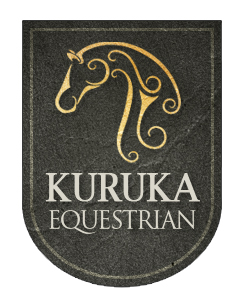Equestrian Canada Rider Level Testing Program
The Equine Canada Learn to Ride program is a national program based on current standards of riding and the Canadian Long-Term Equestrian Development model.
The Rider Level Program is designed to be guided by a Certified Instructor or Coach, to ensure that the concepts are clearly understood before the rider progresses to more challenging levels. The program provides an opportunity for riders to progress, demonstrating their skills through a series of increasingly complex written tests, interviews and under-saddle jump and flat tests.
The purpose is to give riders an opportunity to learn not only how to ride but also learn everything else there is to know about the horses and equipment and owning and taking care of a horse. It is a way to ensure that all across Canada students get the opportunity to lean a standard of knowledge and get recognized for their achievements. It is a great first step to future work in any equine related field, great on a resume for those students who hope to work in a barn, and the first part of being able to someday coach other riders.
Our Program
Kuruka Equestrian’s program includes testing for levels 1 – 8. This program is based on the following manuals that outline the basic horse and stable management knowledge as well as expected riding skills for each level of certification:
- Equestrian Canada English Rider Handbooks
- Stable Management in Canada book
- Additional resources (such as the Developing Equestrians Guidebook)
To prepare for the testing students participate in a variety of clinics and lessons to ensure that they have the skills needed for their level in both riding and stable management. Rider Levels are standard across Canada, so once certified a rider can hold their accreditation across the country. Our rider level prep clinics run through the Fall and Winter months, with testing taking place each Spring. This program is open to Kuruka students that are in the lesson program.
Rider Levels
2024
Rider Levels 1-3
- The Rider 1 evaluation is comprised of a written test, a practical horse knowledge component and a flat riding component.
- The Rider 2 evaluation is comprised of a written test, a practical horse knowledge component and a flat riding component.
- The Rider 3 evaluation is comprised of a written test, a practical horse knowledge component, a flat riding component as well as a jumping component.
Rider Levels 4-6
- The Rider 4 are expected to complete a flat test and ride jumps at a height of 2′ (0.6m) at a gymnastic phase and course phase. Written and practical portions also tested at this level.
- The Rider 5 will be jumping fences at a height of 2’3″ (0.7m) at a gymnastic phase and course phase, in addition to a flat test and a lunging phase. Written and practical portions also tested at this level.
- The Rider 6 will complete jump fences at a height of 2’6″ (0.75m) at a gymnastic phase and course phase in addition to a flat test and a lunging phase. Written and practical portions also tested at this level.
Rider Levels 7-8
- The Rider 7 will complete a flat test and jump fences at a height of 2’9″ (0.88m) in a gymnastic and course phase, in addition to a lunging component. Written and practical portions also tested at this level.
- The Rider 8 will jump a medal type course of 2’9 – 3’ (0.85- 0.90m), with confidence and authority. The rider should be able to influence the horse in a positive fashion and improve its way of going. In addition to this there is a flat test and lunging and gymnastic component presented. Written and practical portions also tested at this level.
PLEASE JOIN OUR WAITING LIST AS
Our Lesson Program is Currently Full
Kuruka is currently full for lesson spots. Please contact us if you would like to be put on a waiting list.

